Beans & Bezels Beans & Bezels B&B
Disclaimer: this video/review was not sponsored by MING or any other entity. This watch was generously loaned to me by my friend @watchdibz. Please check out his Instagram to see more photographs of this watch and other exceptional pieces.
Video
Review
I recently had the opportunity to photograph and review the GPHG 2024 award winning MING 37.09 Bluefin dive watch, and my review of that watch has already been published. Fortunately, a friend of mine also purchased the 37.09 Uni when it was launched, and I have the privilege of being able to photograph and review one of these watches too. So a shout out to my friend @watchdibz for sending me this piece to check out. The 37.09 Uni is a stealthy yet quirky take on the 37.09 dive watch platform, with an all DLC case, a black dial that has the same mirror like characteristics of the Bluefin and orange accents on the hand and rotating dial inspired by the similarly colored Sea Urchin ‘Uni’.
The 37.09 Uni is part of their annually refreshed collection, with 150 pieces made for 2025 but more units to be released in 2026. This watch has a retail price of 5250 CHF, that is roughly $6450 USD at the time of writing. But since MING now has an authorized retailer in the US, it is perhaps a bit cheaper if purchased from Collective Horology, who already have an excellent reputation among independent watch collectors.
Since the Uni and the Bluefin are nearly identical in many aspects, I thought it would be a better use of this review to discuss how the 37.09 platform differ from the previous generation of MING dive watches, the 18.01 h41. But I will of course dive into the details of this specific watch wherever relevant.
Let’s check it out!
Case
With dimensions identical to the Bluefin, the Uni measures a smidge under 38mm in diameter, 44.5mm from lug-tip to lug-tip, and 12.8mm in overall thickness which includes the curved top and bottom sapphire crystals. These proportions have gotten more compact in all dimensions when compared to the 18.01 h41, which measured 40mm in diameter, 46mm from lug-tip to lug-tip and roughly 13mm in overall thickness. The Bluefin and Uni are made of stainless steel, whereas the 18.01 h41 and its DLC variant were both Grade 5 titanium watches.
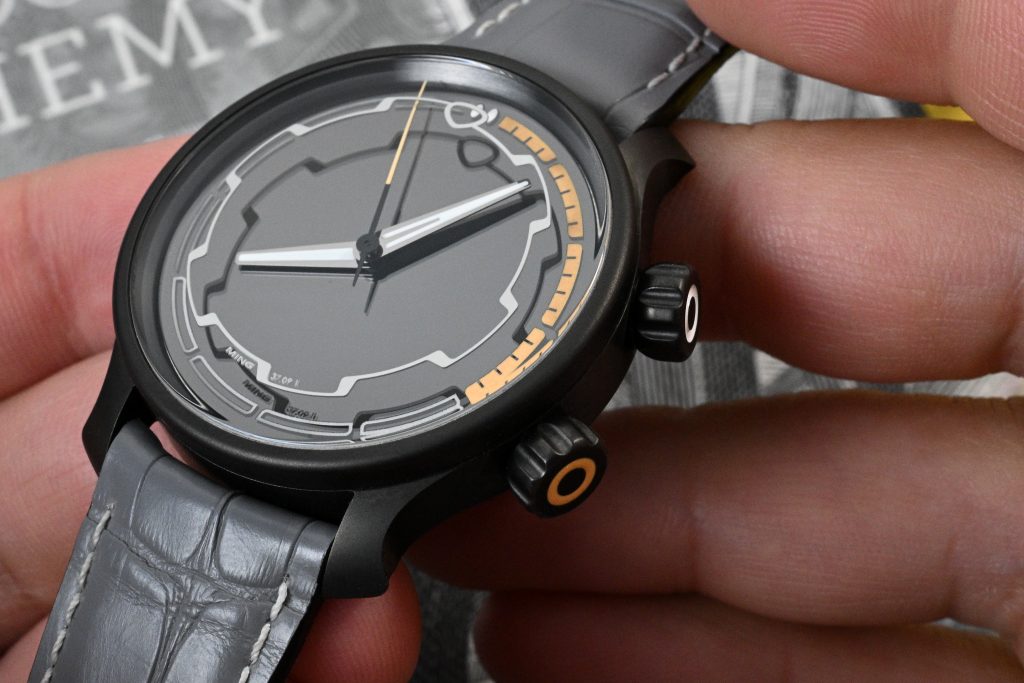
With the 18.01, MING created an entirely new design platform that only inherited design cues from a small private run of Abyss concept watches. The 37.09 on the other hand builds on the 37 Series, a case family that we’ve seen on A LOT of recent releases. To be fair, they aren’t really re-using cases from other 37 Series watches for this, since it is notably thicker, and features a much more complicated case architecture to support the twin crown system and the inner rotating dial. But the overall design of this watch isn’t limited to the diver, and is one we’ve become quite familiar with over the last few years.
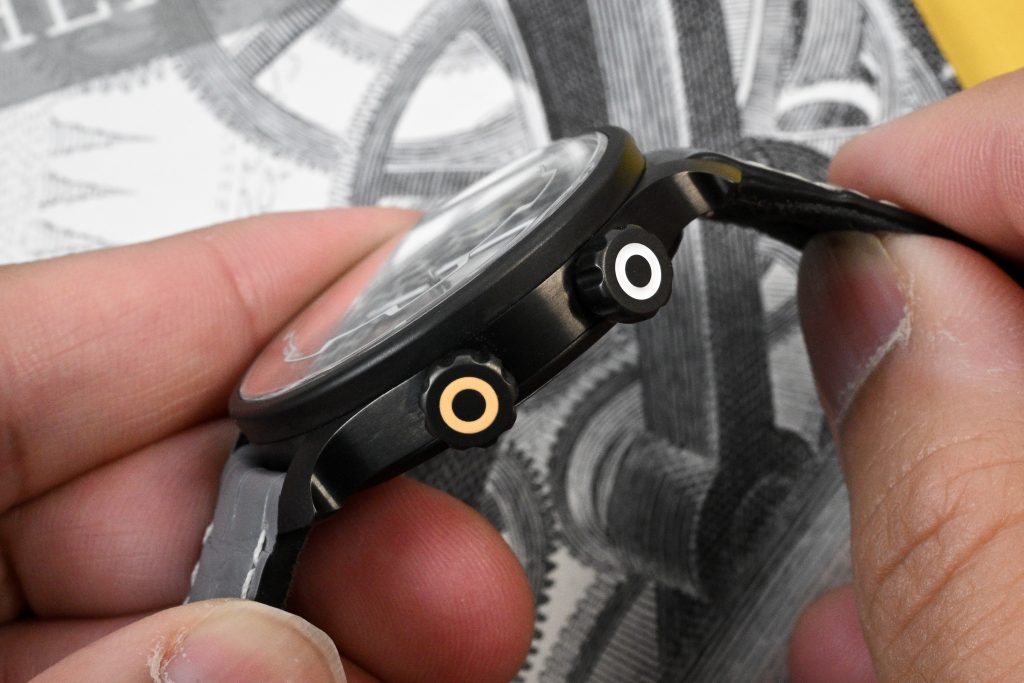
Speaking of crowns and rotating things, the 37.09 is arguably a much more technically challenging engineering project than the 18.01. MING ditched the outer rotating bezel on the 18.01 for an inner rotating dial – yes, I said dial and not bezel. On the 37.09, a fixed (not screwed down) crown at the 4 o’clock position rotates the entire dial, which contains a dive timer style marker ring towards its outer edge, and serves as a timing indicator. The crowns on the 37 are 6.4mm and 6.7mm in diameter, and the crown on the 18.01 h41 was around 6.7mm in diameter.
The action on this bezel is excellent thanks to an impressive and challenging construction, and the lumed crown adds just a bit more to the overall package. I’ve always found my MING 18.01 bezels to be one of the best dive bezel experiences I’ve had, in terms of bezel action, legibility and lume. The 37.09 has even more impressive action, but is a bit lacking in both the legibility and lume department, and the Uni appears to be a bit weaker with lume compared to the Bluefin too, but we’ll get into that in a bit.
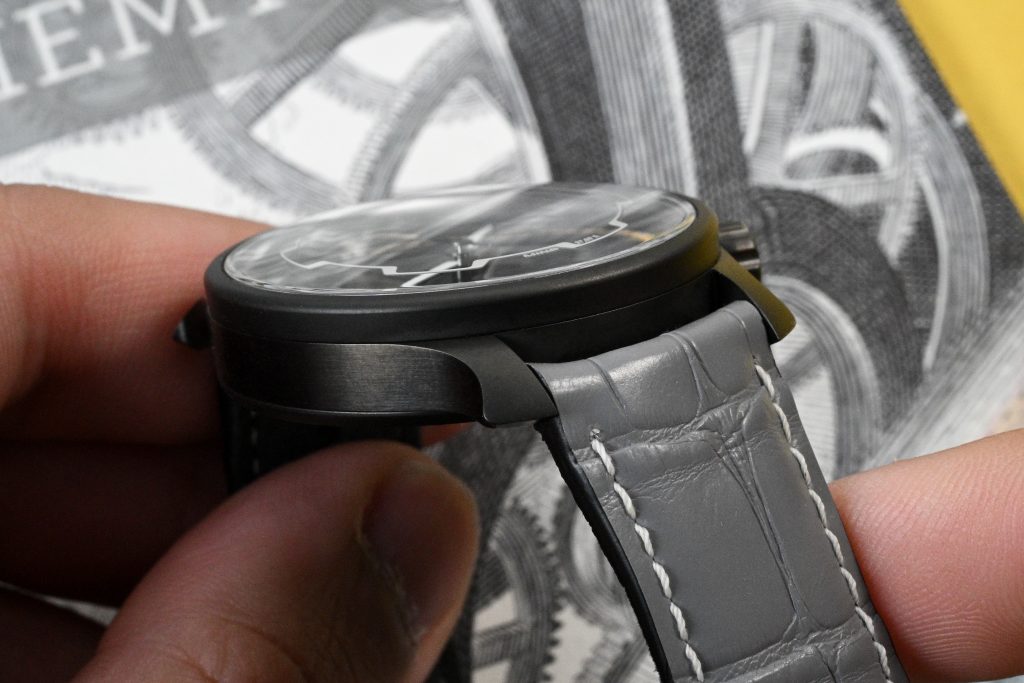
The 37.09 features a much wider sapphire crystal than the 18.01, and this crystal has a noticeable curvature to it unlike the flat crystal of the 18.01. From what I’ve gathered, the curved top and bottom crystals of the 37 series are an intentional and function driven choice to improve the overall pressure rating of these cases. While the 18.01 had a bonkers depth rating of 1000m, the 37.09 has “only” 600m of water resistance, but now features an external rotating crown that is not screwed into the case, and also features a sapphire case-back.
Both the 37 and the 18 Series have 20mm curved lugs. The 18 Series had the boldest of all MING lugs, with a pair of massive flared lugs that extended well beyond the case and wrapped around the wrists nicely, grounding the watch comfortably. The 37 Series have shorter lugs that hover over the wrists and wear more light straight lugs.

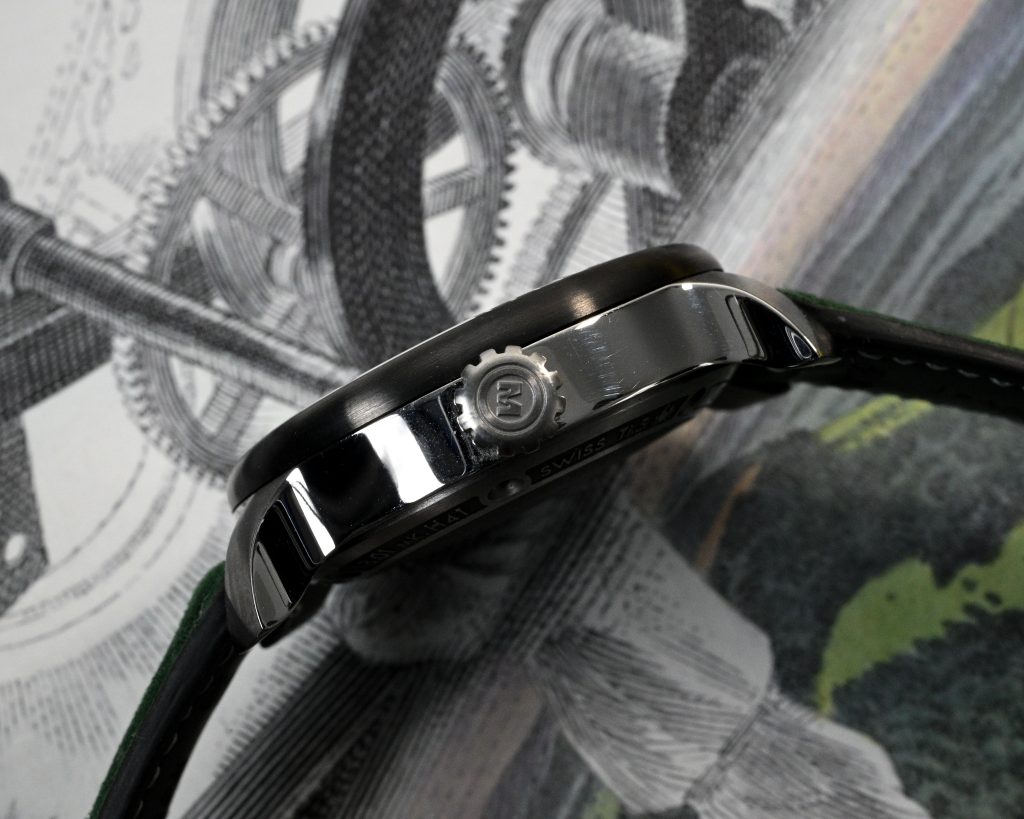
Flipping both watches over, the 18.01 has a solid case-back with a textured back that further aids in staying grounded and stable on the wrist, whereas the 37.09 gets a curved sapphire crystal that gives you a look at the movement inside. What stood out to me most while comparing the two watches is that the 37.09 became 2mm narrower in diameter, lost 400m of water resistance, but only lost 0.3mm in overall thickness. I would’ve preferred if MING ditched the open case-back and directed some more engineering effort into slimming down the case, particularly since the overall package is now smaller compared to the 40mm 18.01. But that’s probably a personal preference that a lot of people won’t share. In terms of overall build quality, finishing and construction, the 37 Series feels a lot more refined as a product. A lot more complex engineering design went into making the 37 Series possible, and the result is a great follow up to an already amazing case on the 18 Series.
Dial
The overall design recipe of the Uni is identical to the Bluefin, but with differing ingredients. The Uni gets a redesign for the floating hour track, and is the first time I’ve seen this design on a MING watch. This could perhaps be a tease of a future design language, or maybe this is just a one-off, who knows? Either way, it looks pretty cool and I love the asymmetry to the repeated markings.
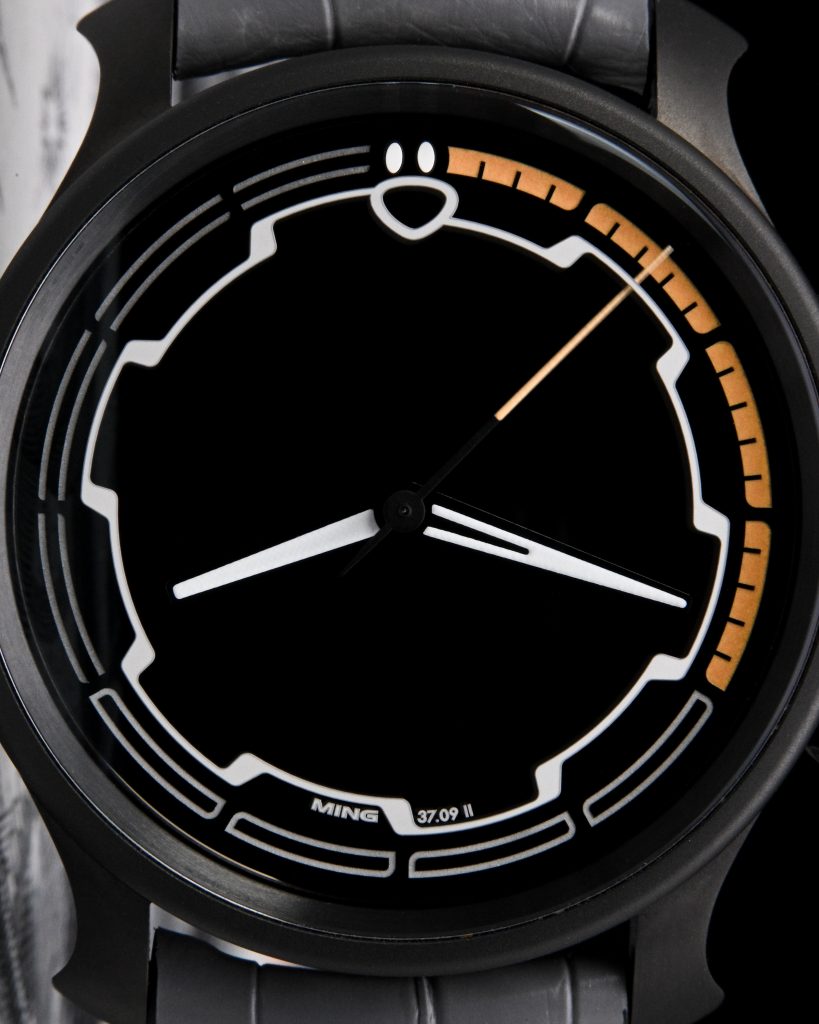
Instead of a metallized blue sapphire dial, the Uni gets a mirror polished black sapphire dial that looks even blacker than Vantablack in certain angles, and then looks like a mirror in others. So while it may appear to be “just another black dial”, it is very dynamic given the multi layer construction and generous use of sapphire and shadows. The dive timer etched into the dial also has a different design with slightly more legible 20 minute markings in orange, and a new design for the rest of the 20 minute segments that are all filled with lume.
When compared to the Uni, the 18.01 tends to look a bit more simple and straightforward, even though it has a lot of the same design materials and characteristics like a metal base layer, with a sapphire layer that contains HyCeram lumed markers, and so on.
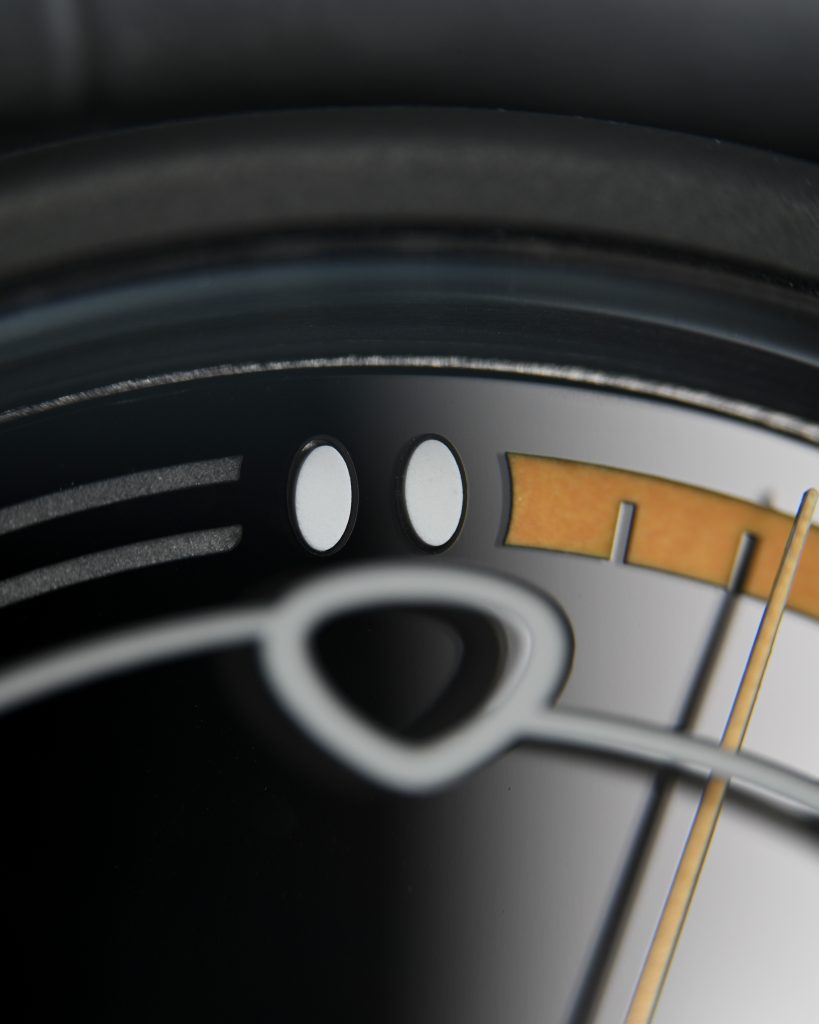
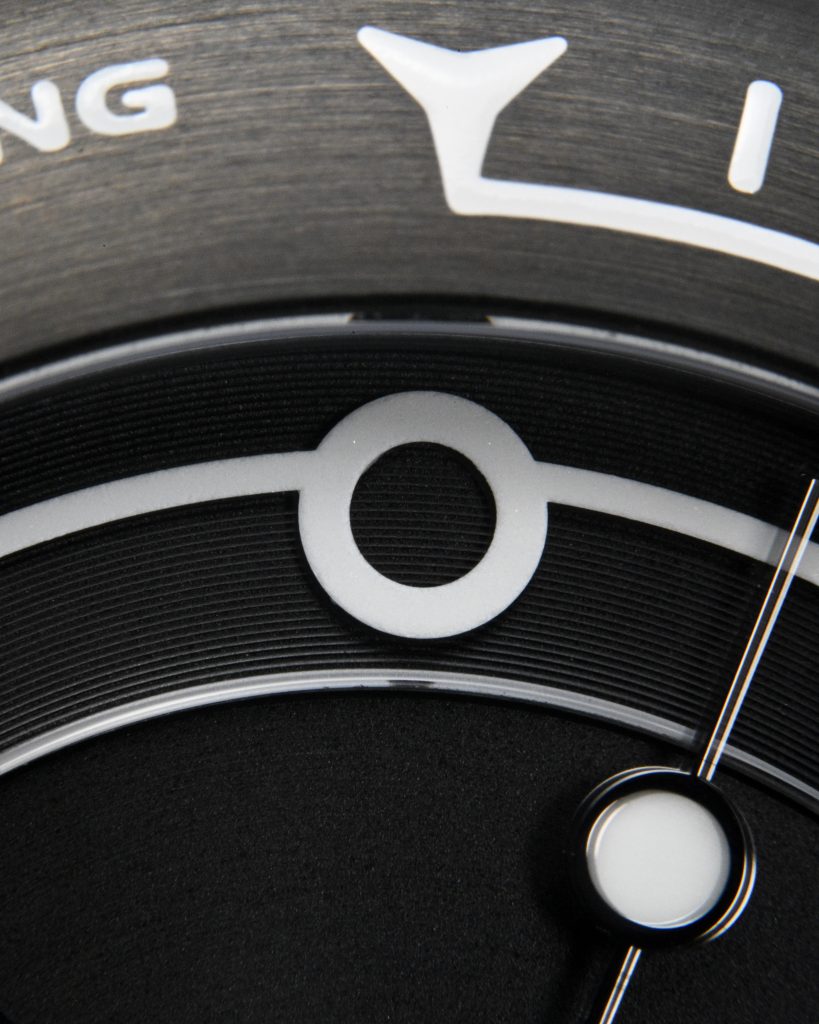
Both the 37 and 18 Series divers generously deliver an impressive dynamic visual experience, with dials and crystals that invert their colors based on lighting and perspective, resulting in many different personalities throughout the day. The 37 series is perhaps more suited to this task given its large sapphire dial layer and the sapphire crystal with its hour markers fused to its bottom surface. The inversion coupled with the shadows makes for an incredibly dynamic experience that is an absolute pleasure to photograph.
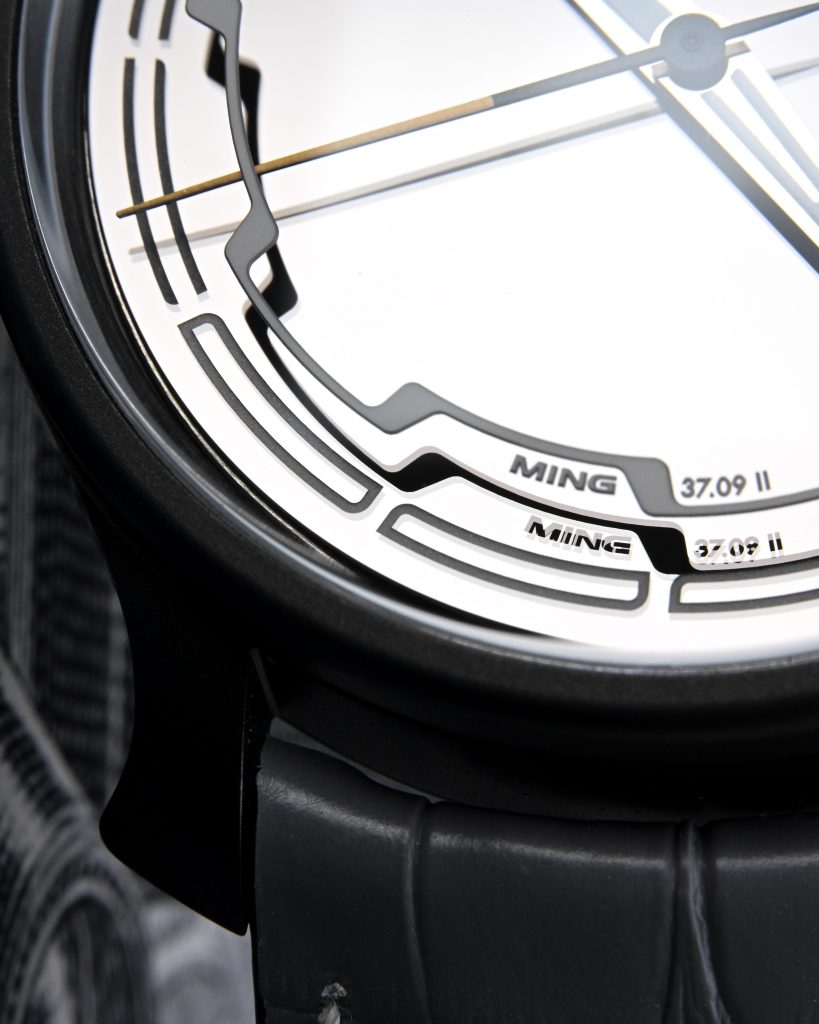
The 18 Series used a more traditional hand set – with a metal frame and large hollow lume plots that were generously filled with lume. Even the seconds hand had a traditional lolipop style lumed element filled with lume. On the other hand, the 37 Series goes with a metal base layer and a pad printing style process applies layers of lume on the hands, allowing for more irregular shapes like on the minute hand. For the seconds hand, the 37 series gets a more plainly painted lume application that is unfortunately not very potent.
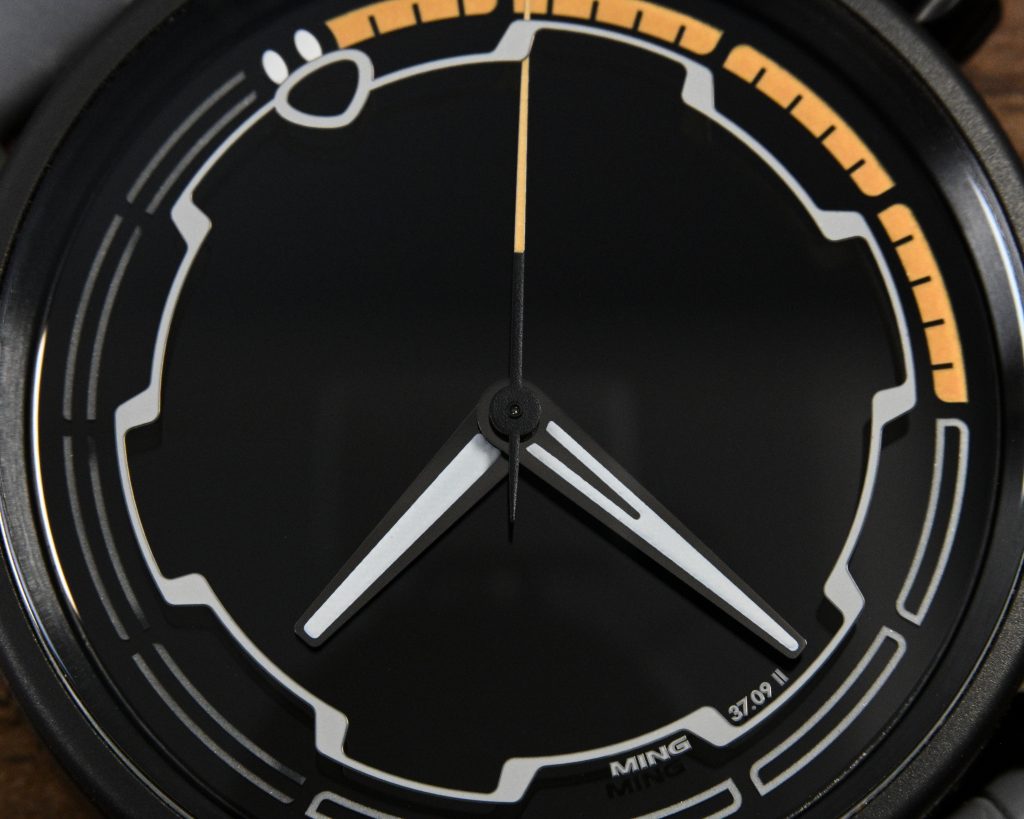
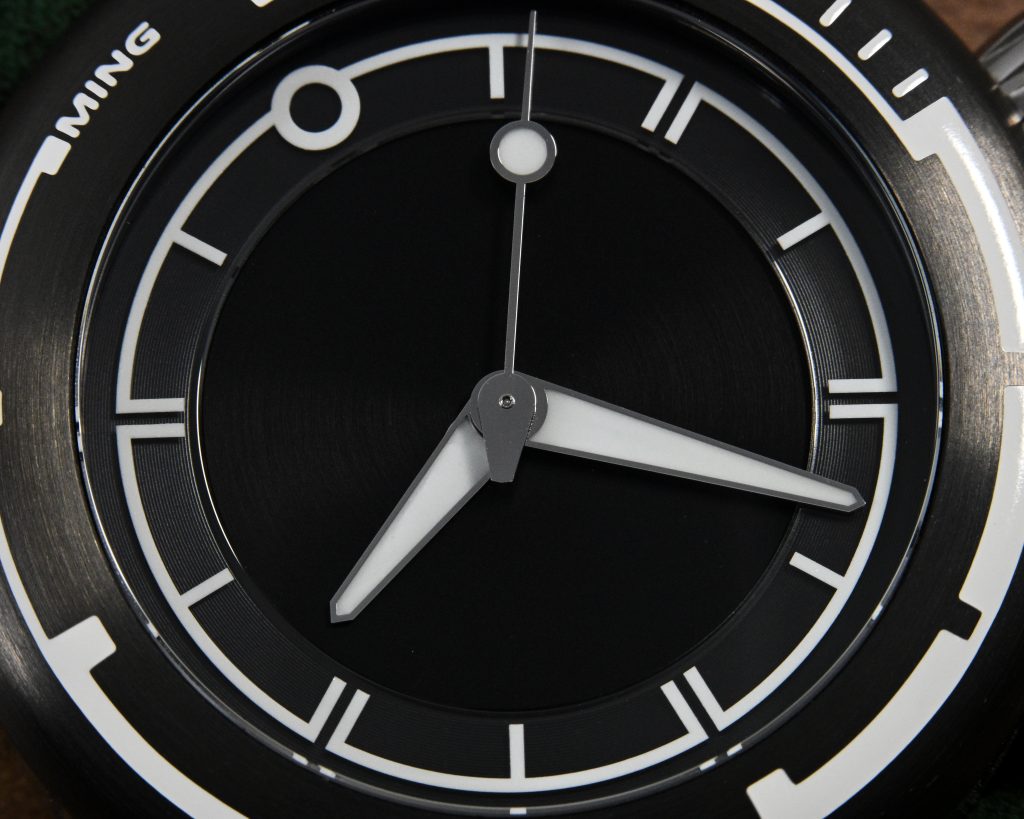
But the overall design of the Uni is very cool, with interesting use of materials, layering, colors and finishing techniques. The 18 Series tends to look a lot ‘simpler’ in comparison, but I don’t think the 18 lacks in any way either. I like the physicality of some of the dial hardware on the 18.01 like the raised sapphire track that contains the HyCeram floating markers, and the generously lumed hands that are deeply and precisely filled.
Lume
The MING 18.01 is perhaps one of the best lumed watches I’ve owned, and one of the best lumed watches I’ve ever come across. That watch set a very high standard in the lume department that has been nearly impossible to beat over the last 4 years since it was launched. I had very high expectations when the 37.09 Bluefin was launched, but unfortunately that watch did not live up to those high standards. Don’t get me wrong, the Bluefin was plenty capable and the lume looked fine. But is “fine” the best way to follow up “incredible“? Perhaps not. The Uni suffers the same fate, and thanks to the orange lumed accents, perhaps suffers a bit more than the Bluefin.

The lume design is incredible on the Uni – the combination of HyCeram lume on the crystal, blue Super LumiNova on the dial and a stunning orange contrast on the dive timer ring and seconds hand, all make for an incredible visual experience. But this experience is short lived when compared to it’s predecessor. The 18.01 is in a league of its own with its use generous of Super LumiNova and HyCeram on the dial and bezel, and very generously lumed hands.
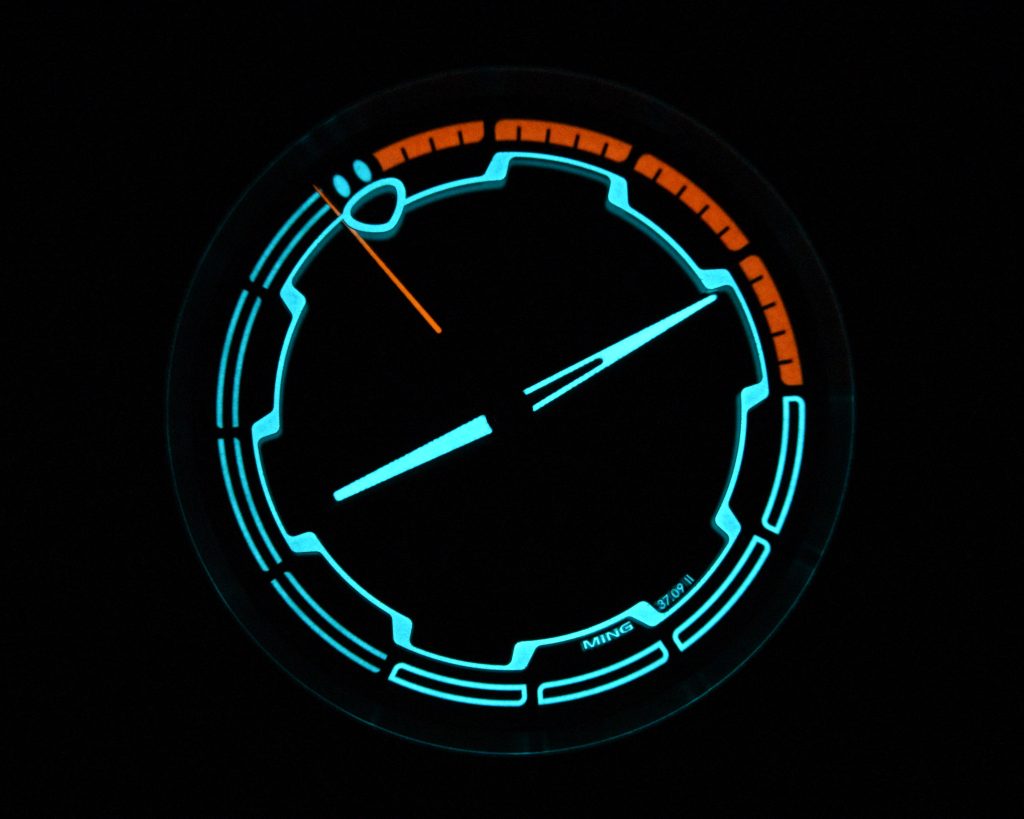
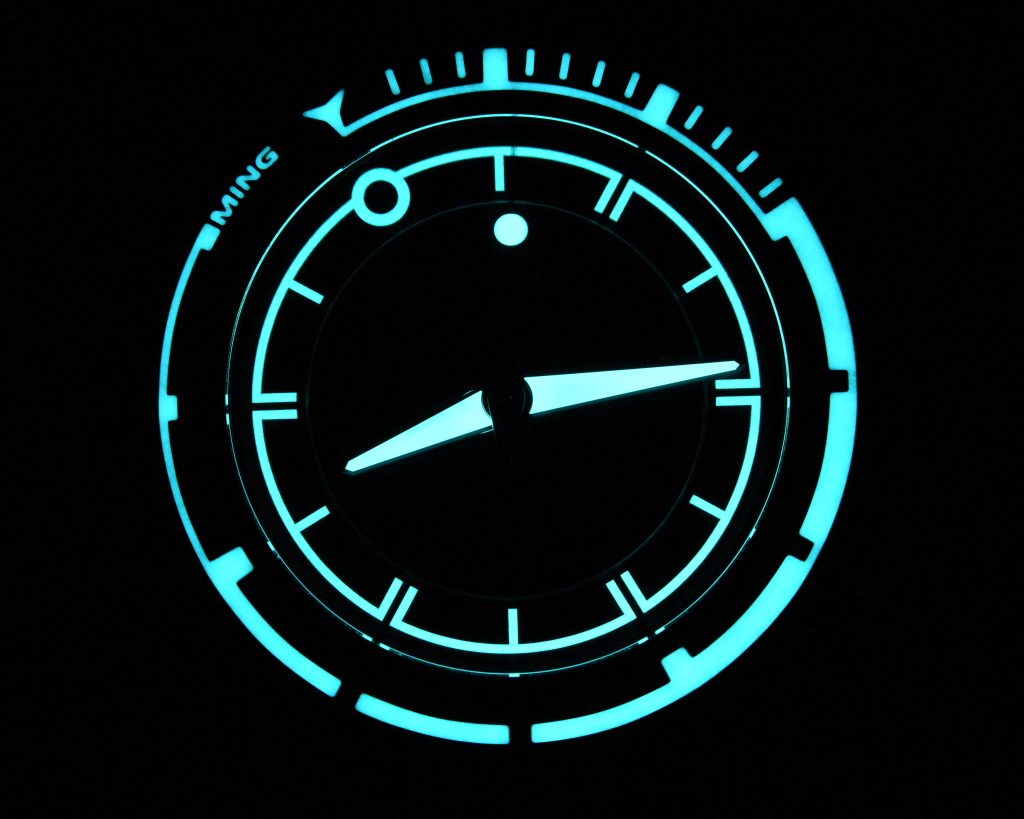
I had to compare the Uni with a couple of other watches to which I hold in high regard – my MING 20.11 Mosaic with HyCeram lume on the sapphire hands and sapphire dial, and the Christopher Ward C60 Trident Lumiere, with uses a similar mixture of Globolight XP on the markers, hands, and even logo! The Uni ends up being the weakest performer here which is a bit of a bummer, and I hope the third iteration of the MING diver performs more like the first and less like the second.
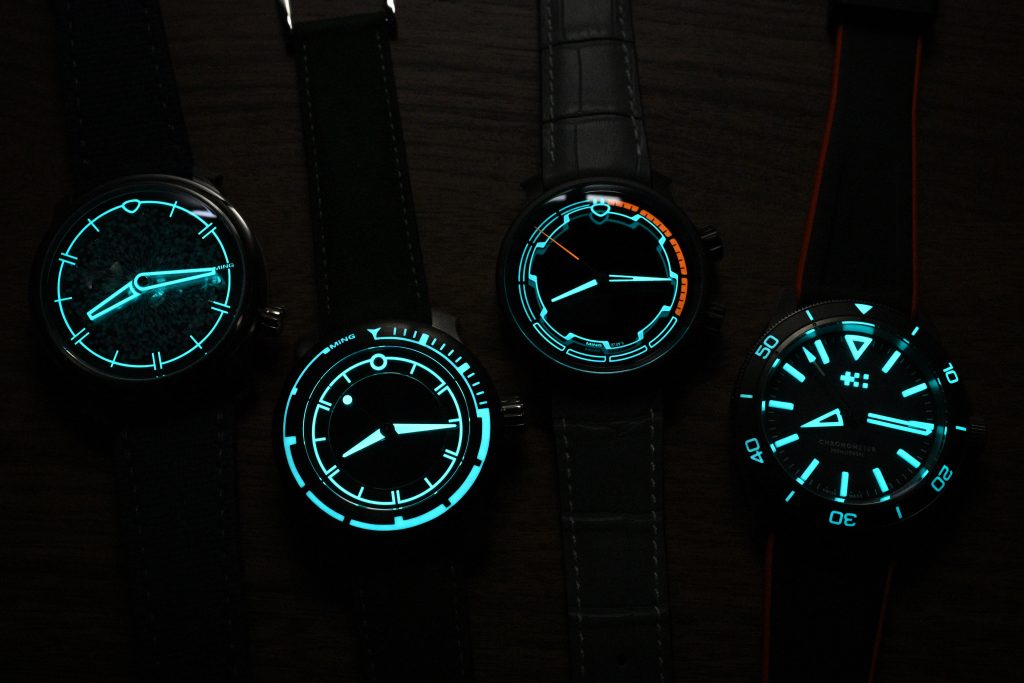
Movement
So far, things have been pretty contentious between the 18 and 37 divers, with the 18.01 still being able to put up a good fight against its modern incarnation. But the movement is an area where the 37.09 wins by a landslide. Over the last 6 years I’ve had countless poor experiences with the ETA 2824 and Sellita SW200 architecture that powers the 18.01. Enough so that I actively avoid this movement, even on watches I absolutely adore.
On the other hand, the Sellita SW300 in the MING 37.09 is, in my opinion, one of the best available off the shelf automatic Swiss movements you can get. The winding operation is excellent, it keeps good time, it is notably slimmer than the ETA2824/SW200, and just appears to have a lower failure rate in comparison.
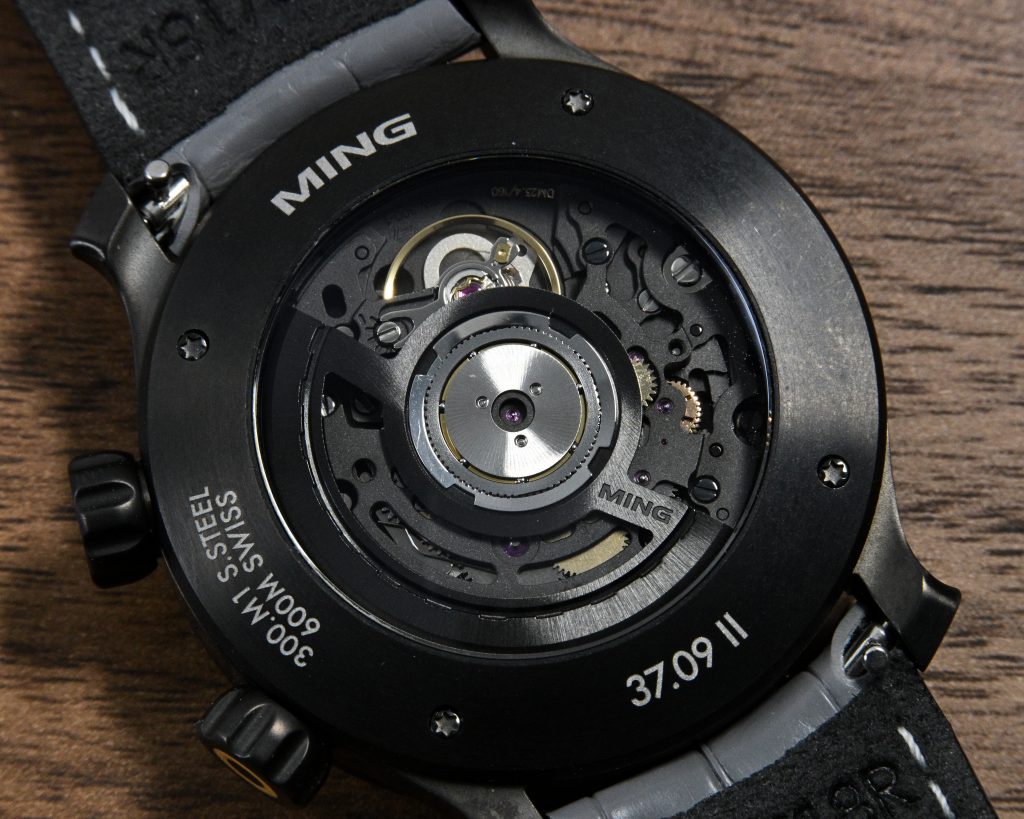
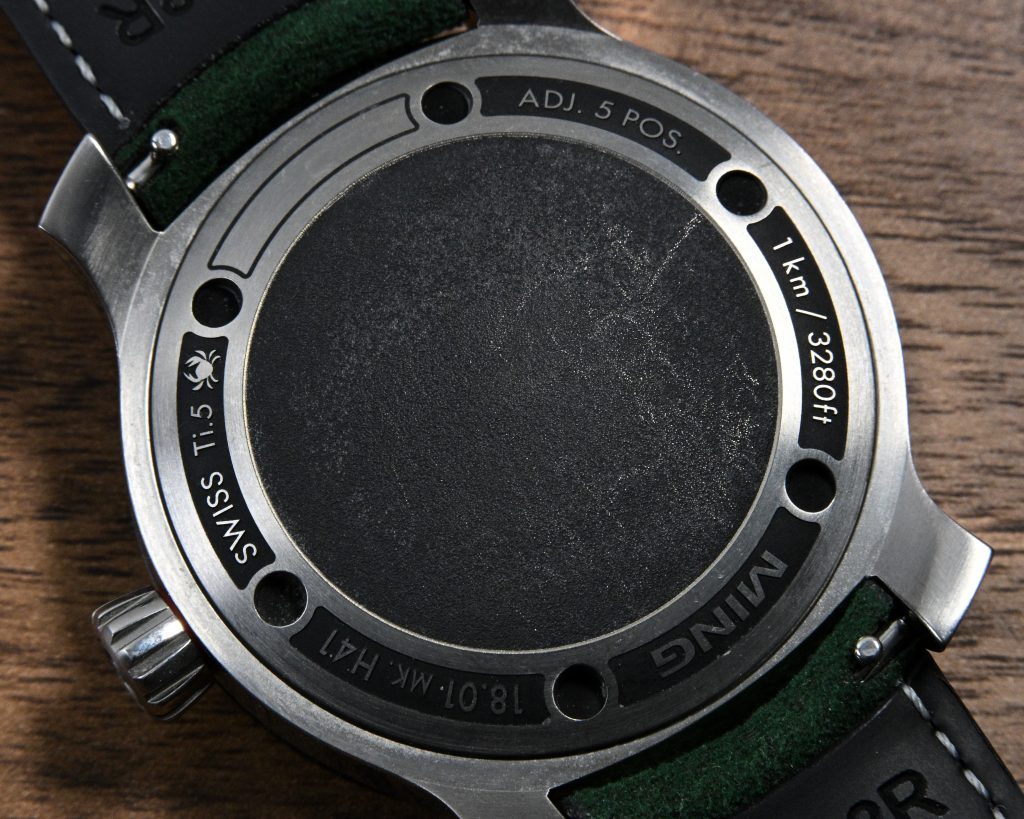
MING went with a slightly atypical version of the Sellita SW300 featuring an anthracite finishing and plenty of skeletonization of the bridges and plates. I think this adds a nice touch, and makes the whole modern design of the watch come together a bit more cohesively. But like I said earlier, if it were up to me I would ditch the exhibition case-back and try to shave off some of the overall thickness instead.
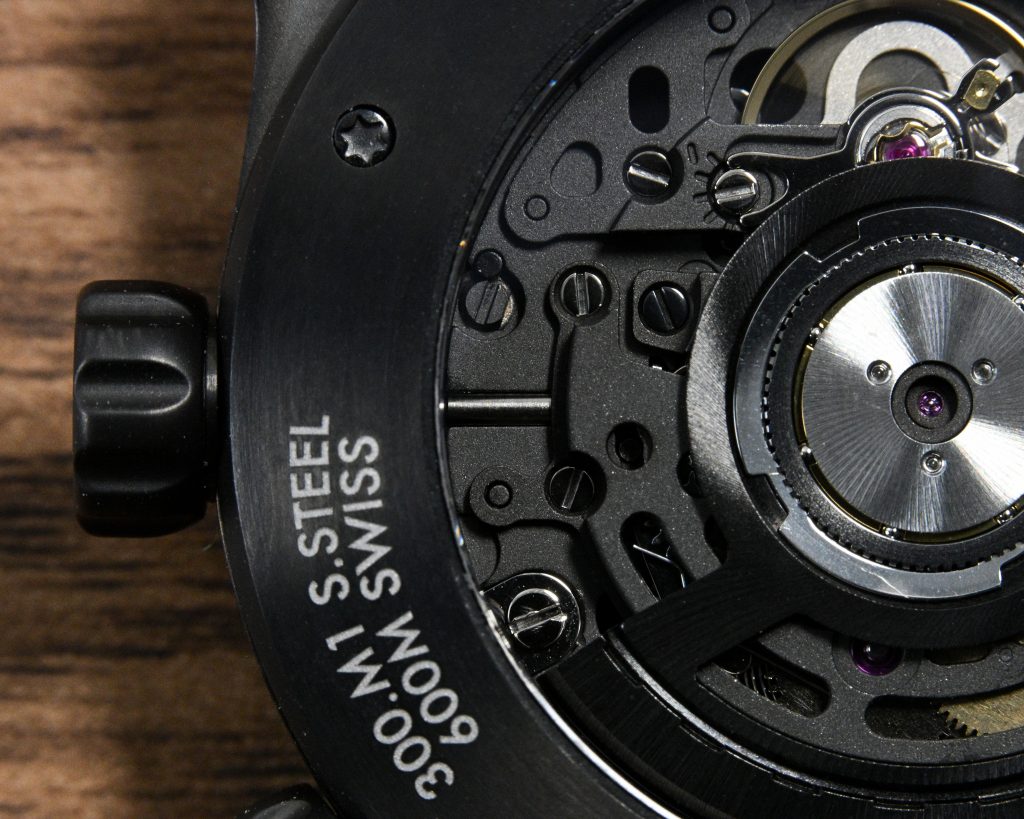
Another area of criticism I have for this watch is the movement’s performance guarantees. MING regulates their movements pretty well and most MINGs I’ve owned have run within +/- 5spd, and I experienced the same with this Uni. MING states that each movement has been regulated to 6 positions in a 250 hour test program, but they make no claims about the performance range they’ve been regulated within. An at roughly $6500 USD, using a Sellita SW300 that is a Chronometer certified doesn’t seem like too much of an ask. Christopher Ward is able to offer COSC Sellita SW300 movements, albeit with no architectural modifications, in their watches that cost around $2000.
On The Wrist
The 37.09 watches wear comfortably on my 6.75″ wrist, although the Uni tends to wear a bit smaller than the Bluefin. I think the all black aesthetic and the new design of the floating hour ring make the watch appear a bit smaller than it actually is. But on the wrist, it is a comfortable experience and much of the overall height disappears when worn.
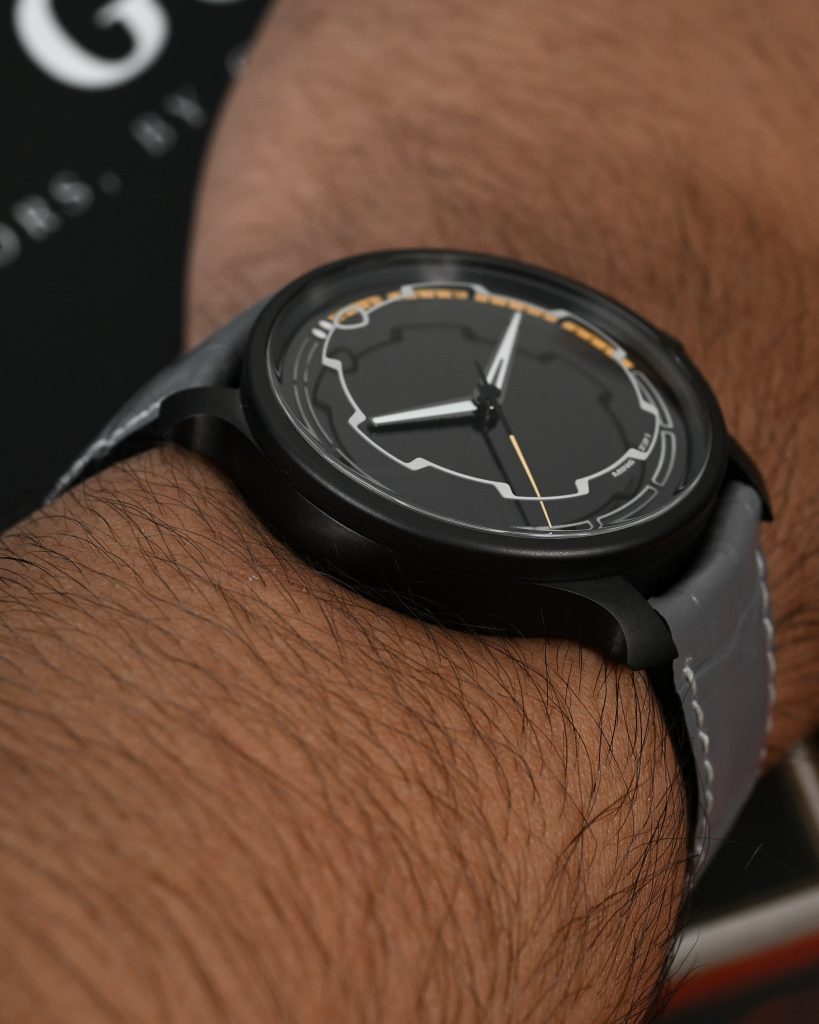
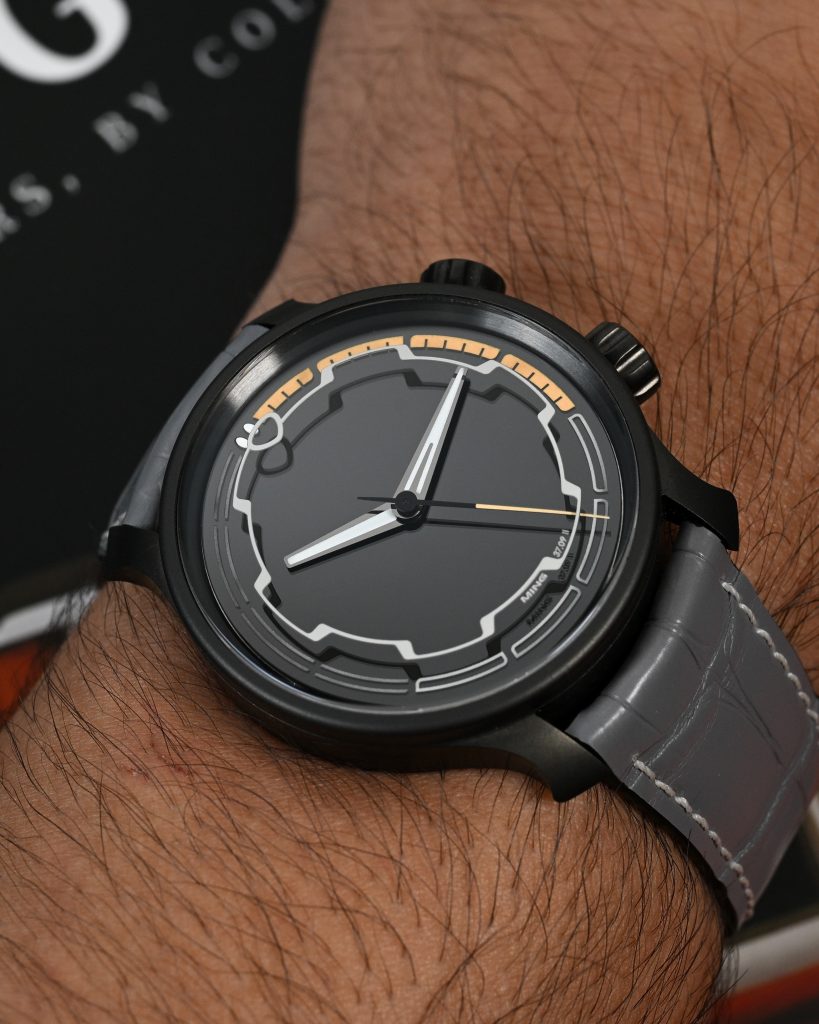
Even though the 37 and 18 Series divers are nearly identical in thickness, the 18.01 wears like a much thicker watch. Personally, I prefer 40mm watches so I’m partial to the 18, so I would’ve loved to see the Bluefin and Uni in a slightly larger diameter with the same kind of visual relief to the overall thickness that is lacking in the 18. But overall, both watches are comfortable to wear, and should support a very wide range of wrist sizes given both their compact lug to lug widths.
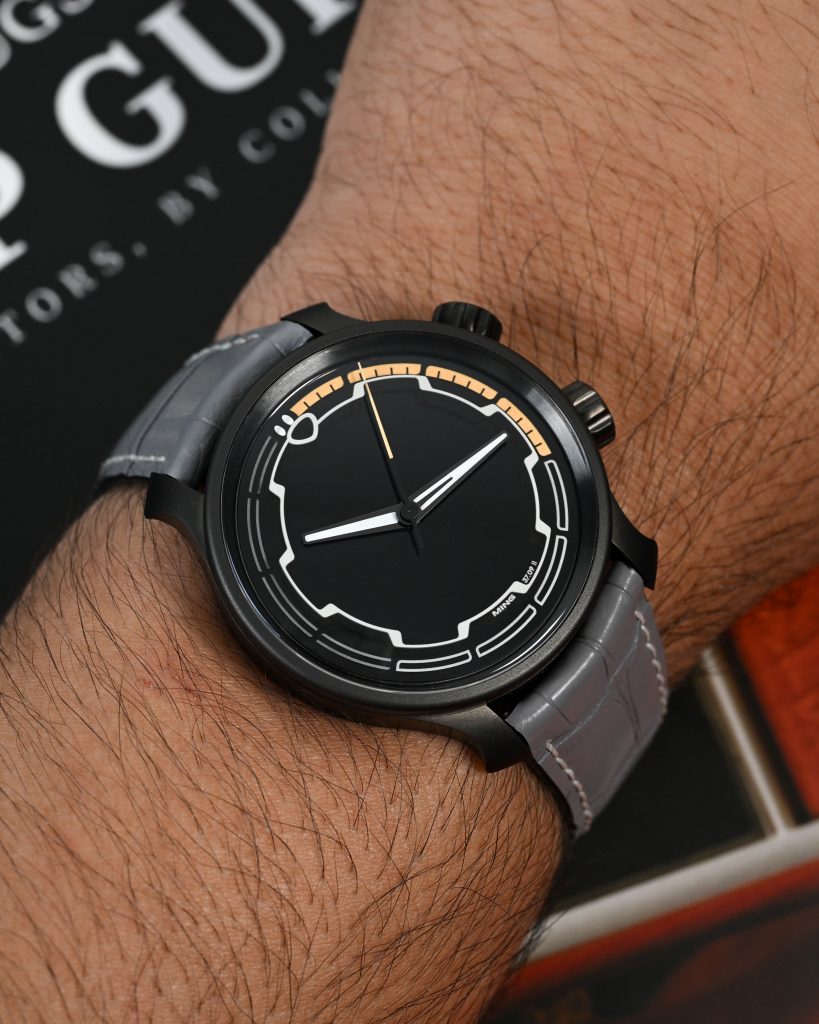
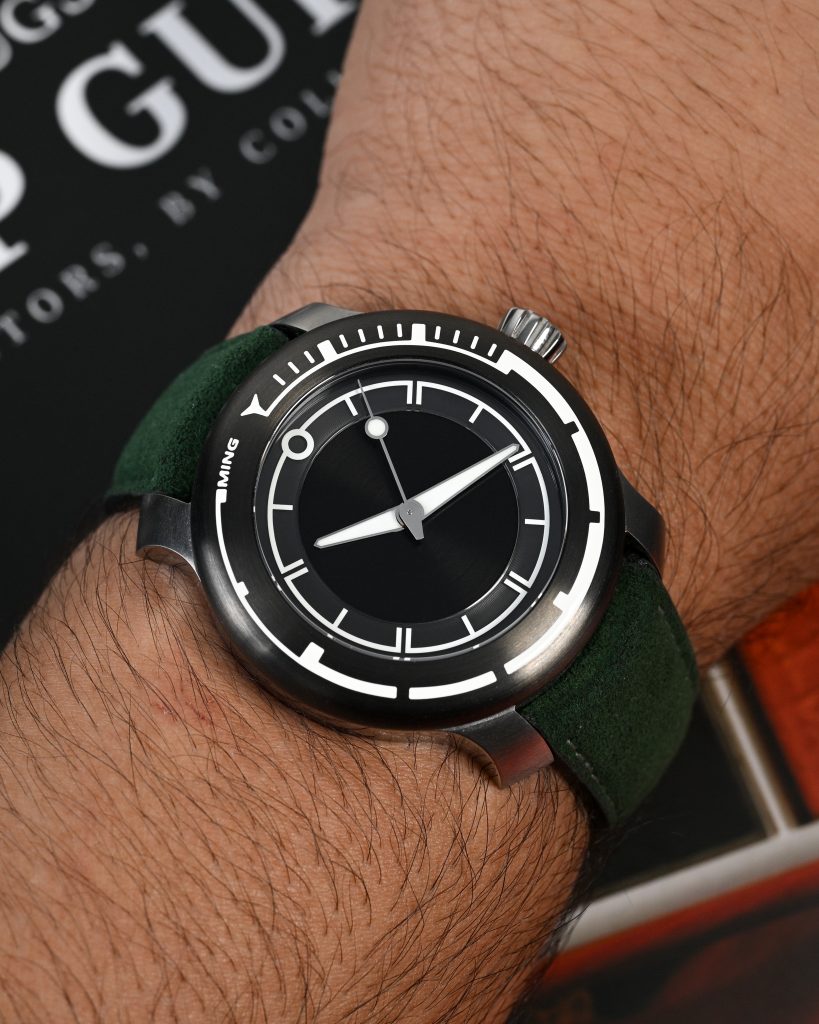
Wrapping Up
This has been a somewhat lengthy review so I’ll wrap this up quickly – the Uni is a great looking watch, and puts a fun and stealthy spin on the 37.09 platform. When compared and contrasted with the first generation of dive watches, the MING 37 diver seems to have made tremendous improvements in case build, engineering, and overall design complexity. The movements have gotten a big upgrade too. Some areas lag behind such as lume, and there is also a noticeable difference in proportions. The 18.01 was the only ‘accessible‘ MING watch that wasn’t 38mm, so I hoped that this era of dive watches would offer a similar diversity in case size for the more affordable end of the market, but unfortunately for me that’s not what the 37.09 aims to do.
But that is no fault of the watch, and it delivers an excellent and unique experience in a world where all dive watches are somehow emulating historical pieces whether they are aware of it or not. As with all things MING, it isn’t trying to be anyone else, and does what it does best – being original and modern with a singular unifying design aesthetic that manages to stay fresh while also staying cohesive.

